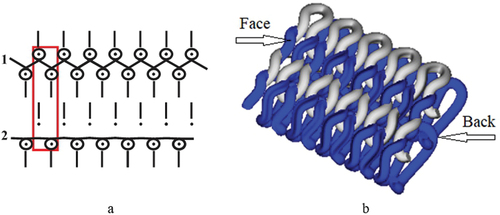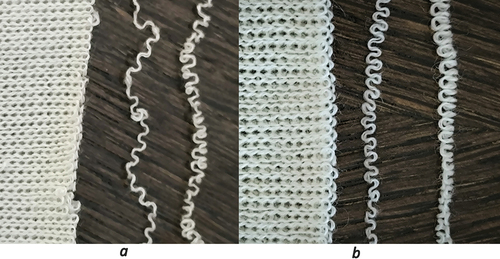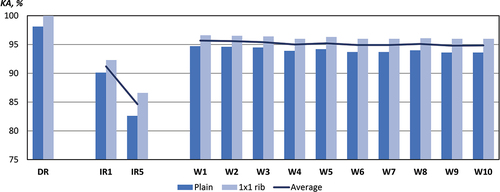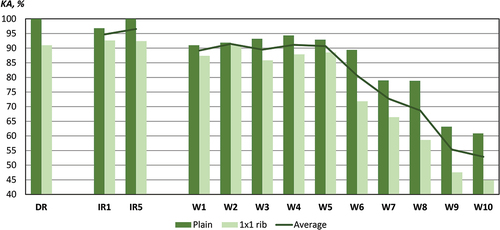Figures & data
Table 1. Structural characteristics of knitted fabric.
Figure 4. Normal distribution of breaking force values (Fo): a − 74 tex cotton yarn; b − 72 tex wool yarn.

Table 2. Strength properties of yarn (before knitting).
Table 3. Strength properties of cotton yarn after unraveling.
Table 4. Strength properties of wool yarn after unraveling.





